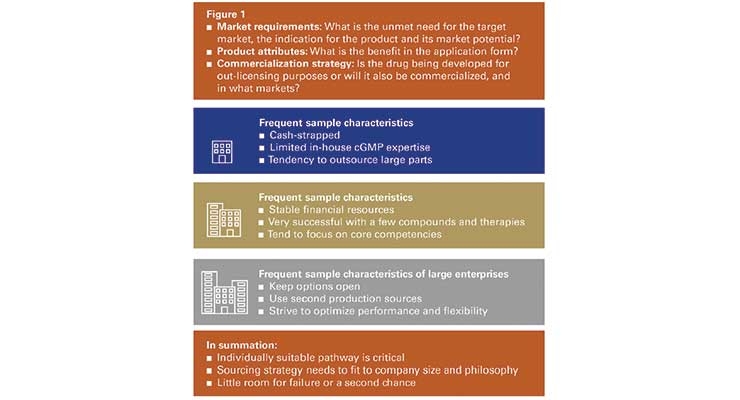The Day All Large Companies “Got It”
10 Nov
Everybody who works for an SEM agency, has worked for one in the past, or just visits Fortune 500 company websites from time to time, has probably had this thought at least once or twice; “If only they got it…”. Some websites have much potential, but almost seem to refuse it.

Although topping the SERPs was much easier in the past, we still live in a time where small websites still stand a chance. In about five years, developing a website from scratch and making it profitable within two years (without touching AdWords), will be pretty hard. Why? Because within the next 5 years, most large companies will finally “get it”. These companies will finally realize what they have, how they can use it, and what they can do with it.
Domain age
A lot of Fortune 500 company domain names were amongst the first 10,000 domains that were registered. Do you seriously think that it would be hard to outrank your 1999 lcd tv related domain? Think again. Take a look at Philips, for example. This manufacturer of electronic appliances registered their domain name back in 1987. Try outranking that.
Links
Websites that have been around since the mid 1990s, have probably been attracting links since the mid 1990s as well. Not only will 15 years of link attraction result in a LOT of links, but a lot of OLD links as well. With Philips again as an example, you’ll see that they have over a million links pointing to the .com domain alone. They have around 75 tlds with unique content and unique links. Another great example is Nike, with just under 2 million links.
Now think of what would happen if they’d actually start leveraging these links, let alone optimizing them. No matter if they keep or ditch the Flash, I’m pretty sure that Nike would finally be topping the SERPs for ‘running shoes’. And this is even without having to obtain new links…
Content
The problem with most Fortune 500 websites isn’t a lack of good content, but the enormous amounts of country selections, Flash, redirects, session IDs, CMS URLs and other search engine barriers blocking this content. If these barriers are removed, not only search engines will be able to find (and rank) a lot of extra content, but visitors will find it as well, through these search engines. The same goes for the linkerati.
Press
I mentioned links before, but the ease of getting attention in the media is worth mentioning as well. If you have developed one of the most brilliant products or services ever, you will find that -even then- it’s pretty hard to get attention or coverage in the media. For some companies, there are entire (and popular!) websites dedicated to news and rumors about new products. Even bad news, such as a big layoff, can result in hundreds of new links from authority news websites.
People
Whether it’s a team of link developers, web designers or marketeers, large companies have lots of them. Bunches of ’em. And if they’re still short of well-skilled personnel, they tend to just hire a few extra, either directly or outsourcing via an SEM agency. Large companies have complete departments that can develop stuff in a single day, that would’ve taken you (or your team, if you’re lucky) at least a few weeks.
Money
Massive paid link budgets? Not a problem. Developing a kick-ass piece of linkbait for several thousands of dollars? Not a problem. Hiring top notch experts from every internet marketing related field to provide input? Not a p… you get what I mean. Don’t you just love it when money isn’t an issue? Well, for most large companies, this almost seems true. They’ll probably have to convince only a few folks and the money tap will be turned wide open.
Being small has advantages…
Like I’ve mentioned before, being small has its advantages as well. Massive companies will never beat a small business owner on passion, dedication or speed. This is where small websites still have an advantage, but that’s about it.
My advice for everybody who is thinking about developing a website? Do it now! Before all large companies suddenly “get it”.
Today’s pharma and biotech companies have encountered many years of high drug discovery and development costs. As such, it is tempting to think that a comprehensive, ‘one size fits all’ manufacturing approach is the most effective route to take. But as we will see, this is rarely the best way to achieve both manufacturing and drug product excellence. To help explain the reasons why this is the case, it is important to first have some common understanding of sample directions where the industry is headed today, check out this guide to continuous improvement processes.
2018 was a record year with sixty-one drug approvals by U.S. regulators. Going into more detail, a recent Forbes article highlights the fact that 74% of these drug approvals were actually for smaller companies, and that 60% of these had never before received a new drug approval.
Meanwhile, approvals for the drugs of Big Pharma dropped to 26% as compared to 35-40% ten years prior. And, while novel therapies can bring significant potential and new opportunities for drug companies, they must oftentimes realize accelerated development and manufacturing cycles in order to succeed in this business sector. This demands rapid, flexible and reliable processes which, depending on the resources available, are either internally or externally supported.
Together with the increased targeting of drugs on smaller patient groups, the complexity of developing and manufacturing such novel therapies also grows. In 2018 more than half of the approved new molecule entities target orphan indications including cancers, metabolic diseases, blood diseases, nervous system disorders and infection diseases. One quarter of the approved drugs had breakthrough designations.
However, never mind in which specific business field a pharma or biotech company is active—whether it is more the established therapy sector or the rare disease field—it is critical to create both a solid drug development strategy and a contemporary manufacturing strategy. To effectively create them, getting it “right first time” might be decisive. Right from the start, before entering the first in-human phase I trials, a well-planned manufacturing strategy should be implemented. To create a solid basis for defining such a strategy, the following aspects illustrated in Figure 1 must be determined.
Defining the right manufacturing strategy is strongly dependent on the company size and philosophy as well as available capabilities. Thus it differs for small, medium and large size companies. What are some major factors to consider?

A familiar business model for small pharma and biotech companies
Given the increased competition within the industry, high flexibility in the manufacturing process is required. While biologics such as antibodies, peptide conjugates and vaccines are very promising development fields, the costs associated with R&D spending are continuously increasing. This results in pressure to manufacture drugs as efficiently and as slim in process as possible. To do so is challenging, but particularly so for the often cash-strapped small biotech companies. And, to be successful in aseptic manufacturing, drug companies need extensive experience in current Good Manufacturing Practice (cGMP) along with site approval from regulators.
Often, the lack of in-house expertise in current cGMP and the expensive equipment needed to perform drug development and manufacturing leads to contracting out some parts of the development and manufacturing work.
Medium-sized companies may have more options
By contrast, while many mid-size companies have the financial resources for realizing more of their drug development and manufacturing in-house, they often also realize external cooperation. The past years have shown that many pharma and biotech companies are able to perform successfully by working with a few very expensive compounds and therapies. Like their smaller counterparts, they focus their resources in a successful way on R&D and marketing while outsourcing the other process steps such as aseptic manufacturing for clinical and commercial drug products. By doing so, they can bundle their efforts on executing projects and focus on meeting the expectations of their investors and shareholders. The cooperation with partners supports their daily operations and overall market success.
A promising approach for large pharma and biotech companies
Most often, a fitting strategy for large drug companies is to keep their options open, remaining flexible and not fixed to a single, inflexible manufacturing strategy. One way to fulfill this common need of high process control can, of course, be accomplished by performing all the manufacturing processes in-house. However, it can also be achieved through a different way, by means of a common quality and process understanding between sponsor and partner. This requires the partner staying abreast of new and emerging regulations. Another commonly used model is using partners to serve as a second production source, often providing the supply of a drug product to specific areas of the world. Achieving a good balance of producing both in-house and externally helps to secure supply, optimize performance and flexibility, as well as minimize risks.
To offer some final thoughts on appropriate drug manufacturing strategies, it is important to realize that within the industry, different faceted pathways of cooperation models do exist. Of course, this depends on the size and character of a pharma and biotech company. Some companies strive to keep capital costs to a minimum, while others see strategic value in obtaining a strong in-house manufacturing competency. Many companies regularly verify their core competency areas, followed by the decision on the kind of cooperation level they will apply for their upcoming R&D as well as manufacturing activities.
Whatever this looks like, as Eric Langer’s latest Report and Survey of Biopharmaceutical Manufacturing Capacity and Production confirms, solution providers continue to expand their offering including capacity and staff, to retain customers as their products advance in development.
At the same time, they are often pioneers in terms of manufacturing novel products such as antibodies or gene therapies. At the end of the day, it is the pharma or biotech company itself which has to find the best balance in development and manufacturing based on the parameters outlined earlier. Defining and following this individualized pathway is critical when navigating an increasingly competitive and challenging market environment. One thing is certain, there is little room for failure, and rarely a second chance.

14 Responses to “The Day All Large Companies “Got It””